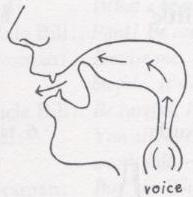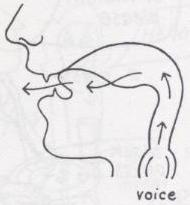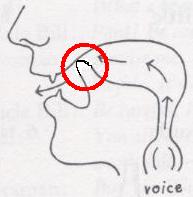
The sound represented by an 'r' in rōmaji is not the same sound as English 'r' or English 'l'. It is between the two. Try saying 'r': the tip of your tongue does not touch the top of your mouth:
 |
| Tongue position for English "r" |
|---|
Try saying 'l': the tip of your tongue touches the top of your mouth:
 |
| Tongue position for English "l" |
|---|
The Japanese sound represented by rōmaji 'r' is somewhere between these two sounds:
 |
| Tongue position for Japanese "r" |
|---|
It is called an alveolar tap . Feel behind the back of your upper teeth with the tip of your tongue. There's a ridge of hard gum there. That's called the alveolar ridge.
When you say an English [r], your tongue approaches the alveolar ridge but doesn't touch. The tip of your tongue is slightly grooved. The edges of your tongue seal off the sides of your mouth. The air from your lungs passes over the top of your tongue on its way out. That is not the Japanese "r".
When you say an English [l], the tip of your tongue is actually touching the alveolar ridge, and the air passes around the sides of your tongue on its way out.
The consonant of ra ri ru re ro is sort of like an [r] and an [l] at the same time. The tip of your tongue TAPS against the alveolar ridge (hence the name "alveolar tap"). In the fraction of a second just before contact, it's like an [r]. In the fraction of a second during contact it's like an [l]. That's why it's so hard for Japanese speakers to distinguish between those two English sounds.
Adapted from a post by Sean Holland.
Copyright © 1994-2025 Ben Bullock
If you have questions, corrections, or comments, please contact Ben Bullock or use the discussion forum / Privacy policy

|

|

|

|

|
| Book reviews |
Convert Japanese numbers |
Handwritten kanji recognition |
Stroke order diagrams |
Convert Japanese units |